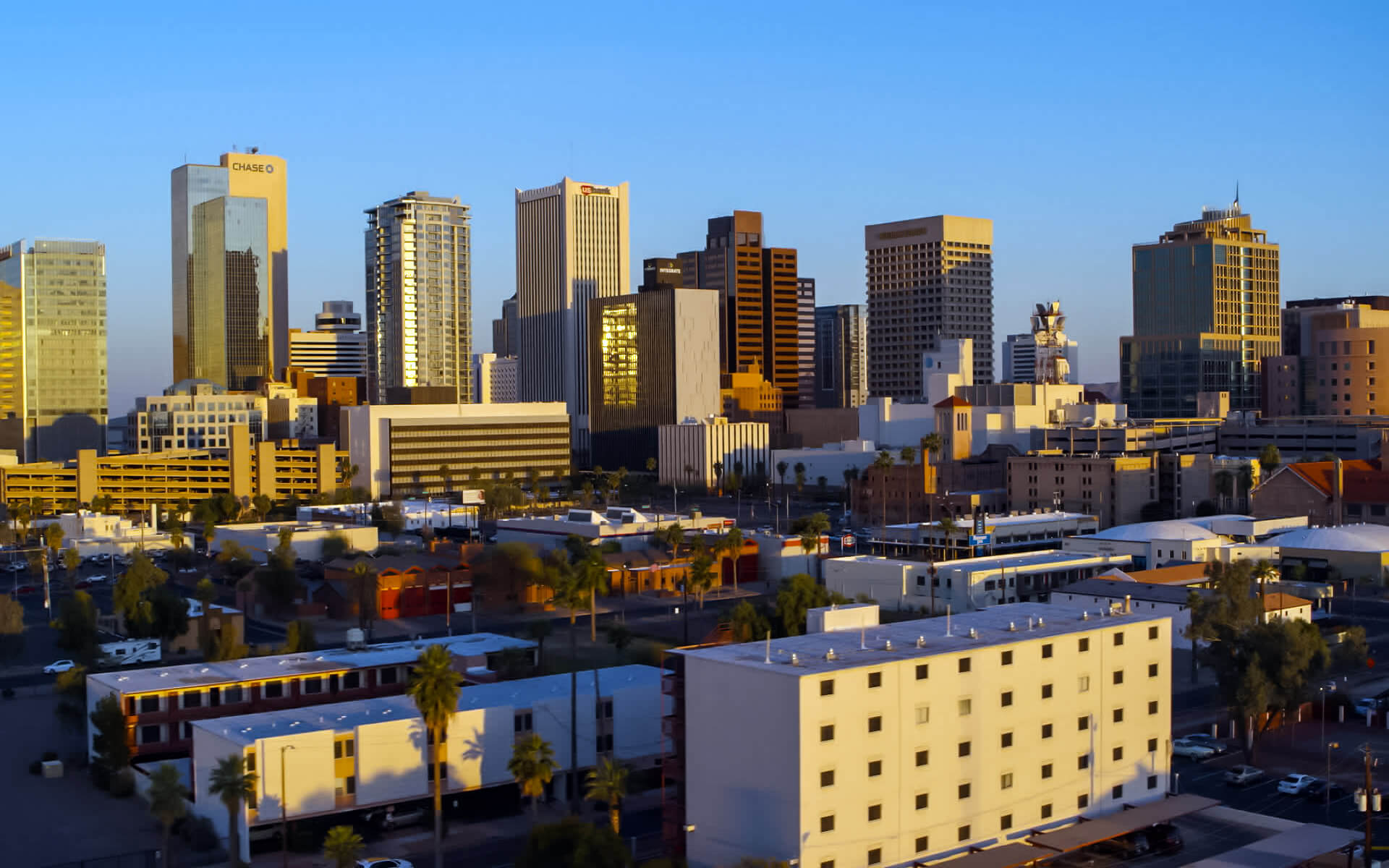Phoenix’s early economy was centered on agricultural and natural resources, with a heavy reliance on the “5Cs” of copper, cattle, climate, cotton, and citrus. The city became more accessible in the 1920s with the completion of the Southern Pacific rail line in 1926, the building of Union Station in 1923, and the development of Sky Harbor airport by the end of the decade. Phoenix was devastated by the Great Depression, but Phoenix’s economy was varied, and by 1934, the city was on the mend. After World War II ended, the valley’s economy grew significantly, as many men who had completed their military training at numerous sites in and around Phoenix returned with their families. The building sector developed further as a result of the city’s expansion with the establishment of Sun City. It served as a model for suburban expansion in post-World War II America, while Sun City, which opened in 1960, served as a model for retirement communities. Between the mid-1960s and the mid-2000s, the city averaged a 4% yearly growth rate.
As the 2007–10 national financial crisis started, Phoenix’s building industry collapsed and property prices plummeted. Arizona occupations decreased by 11.8 percent between 2007 and 2010; in 2007, Phoenix had 1,918,100 employed residents; by 2010, that number had fallen to 1,691,600, a decrease of 226,500. By the end of 2015, Phoenix’s employment total had climbed to 1.97 million, recovering pre-recession levels, with job growth happening across the board.
As of 2014, the Phoenix Metropolitan Statistical Area (MSA) has a Gross Domestic Product (GDP) of little more than $215 billion. The top five sectors were real estate (35.5 billion dollars), finance and insurance (18.8 billion dollars), manufacturing (18.2 billion dollars), retail trade (16.6 billion dollars), and health care (16.6 billion dollars). If government were a private sector entity, it would have placed third on the list, producing $18.9 billion.
When it comes to designing and creating new developments in Phoenix, real estate developers encounter few limits. As a result, the city is prone to excessive growth during periods of economic boom. This explains why the city’s vacancy rates are greater than the national average.
As of 2010, the top five occupations were office and administrative support (17.8%), sales (11.6%), food preparation and serving (9%) and transportation and material movement (6.1%). (5.8 percent ). Retail salespersons are the single biggest profession, accounting for 3.7 percent of the total. As of January 2016, 10.5 percent of the workforce was comprised of government personnel, a significant proportion given the city’s dual status as county seat and state capital. There were 2,200,900 civilian workers, and the unemployment rate was 4.6 percent.
Phoenix is now home to four Fortune 500 companies: Avnet, Freeport-McMoRan, retailer PetSmart, and Republic Services, a trash hauler. The Aerospace division of Honeywell is headquartered in Phoenix, and the valley is home to a number of the company’s avionics and mechanical facilities. Intel has one of their major facilities in the region, employing over 12,000 people, making it the company’s second largest facility in the nation. Additionally, the city is home to U-HAUL International’s headquarters, Best Western, and Apollo Group, the parent company of the University of Phoenix. US Air/American Airlines is the primary airline at Phoenix’s Sky Harbor International Airport. Mesa Air Company, a minor airline group based in Phoenix, is headquartered there.
The military maintains a sizable presence in Phoenix, particularly at Luke Air Force Base in the western suburbs. The sub-prime mortgage crisis had a devastating impact on the city. Phoenix, on the other hand, has regained 83% of the employment lost during the recession.


